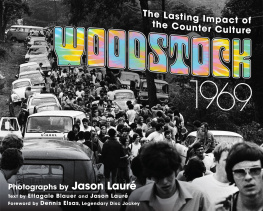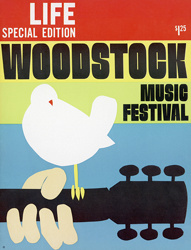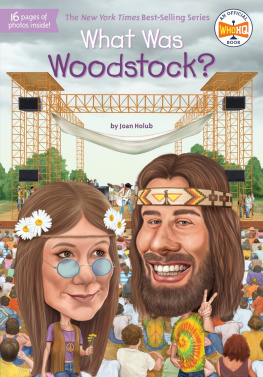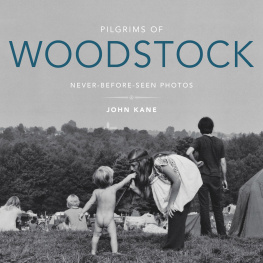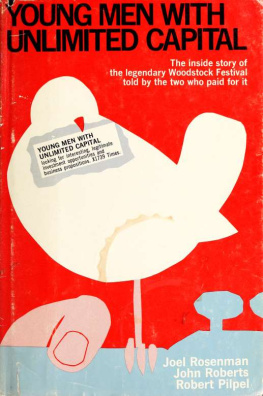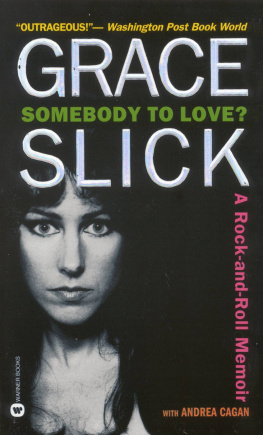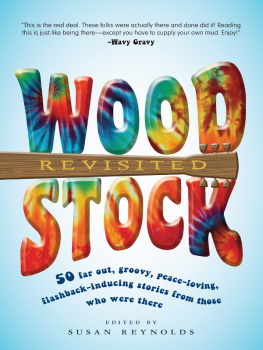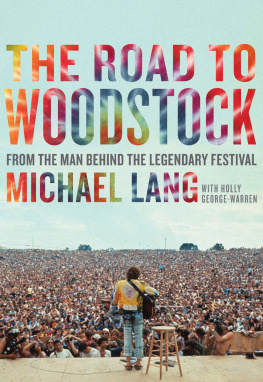Copyright 2018 by Jason Laur and Ettagale Blauer
Photographs Jason Laur 1967, 1968, 1969, 1970, 1971, 1975
Foreword Copyright 2018 by Dennis Elsas
Janis Joplin (opposite copyright page) and Contact sheet from film (opposite Contents page)
All rights reserved. No part of this book may be reproduced in any manner without the express written consent of the publisher, except in the case of brief excerpts in critical reviews or articles. All inquiries should be addressed to Skyhorse Publishing, 307 West 36th Street, 11th Floor, New York, NY 10018.
Skyhorse Publishing books may be purchased in bulk at special discounts for sales promotion, corporate gifts, fund-raising, or educational purposes. Special editions can also be created to specifications. For details, contact the Special Sales Department, Skyhorse Publishing, 307 West 36th Street, 11th Floor, New York, NY 10018 or .
Skyhorse and Skyhorse Publishing are registered trademarks of Skyhorse Publishing, Inc., a Delaware corporation.
Visit our website at www.skyhorsepublishing.com.
All opinions in this book are those of the author. All the memories described are those of the author and necessarily subjective.
10 9 8 7 6 5 4 3 2 1
Library of Congress Cataloging-in-Publication Data is available on file.
Cover design by Rain Saukas
Interior Design and Layout by Tania Bester
Scans by Pam McKenzie, ORMS, Cape Town
Scans by Bob Kapoor Duggal, New York
Print ISBN: 978-1-5107-3073-1
Ebook ISBN: 978-1-5107-3074-8
Printed in China

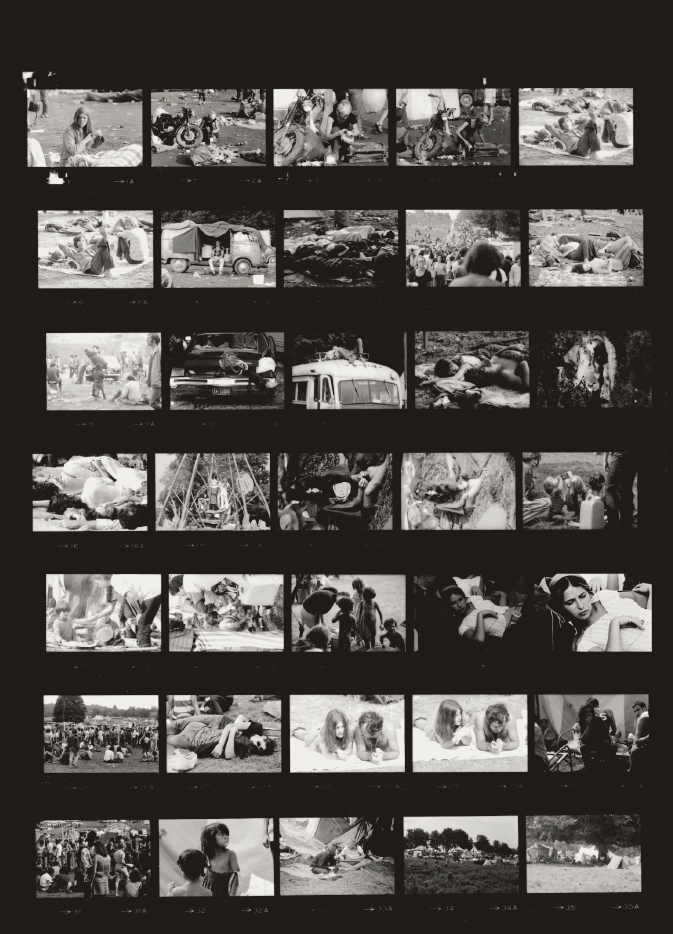
CONTENTS
Foreword by Dennis Elsas
The Woodstock Music and Art Fair is often seen as a cultural touchstone for a generation that came of age in the 1960s and 70s. For many of us it represents a magical, almost mythical, moment in time (August 1517, 1969) when rock music presented in a pastoral setting of a half a million people could unite a community in love, peace, and freedom. Nearly fifty years later, despite countless essays, books, and documentaries to explore it, the story may still be a bit difficult to appreciate for those of us that werent actually there.
I was traveling through Europe that summer, a recently graduated college student, who first learned about the festival when my father sent me a series of newspaper clippings in the mail describing the event. Hippies Mired in a Sea of Mud was one of them and in that pre-digital age of communication it was only a few weeks later when I arrived home in New York that I began to comprehend the scope of what had happened. It wouldnt be until the following spring of 1970, upon the release of the documentary film and accompanying three record set chronicling the Festival, that we could really vicariously begin to celebrate the enormity of those three days.
In the years that have followed, my fascination with the Festival has continued to grow. As a NYC rock radio host since July 1971, Ive shared my observations through countless anniversaries and opportunities on-the-air in presenting the music and interviewing the participants throughout the decades. My first visit to the festival site (which is interestingly not in Woodstock, but actually fifty miles away in Bethel, New York) was in the summer of 1979. I was dating my future wife and she had actually been at the Festival, since her family owned a small summer home just down the road. Ultimately, I would become involved in the creation of the Museum at Bethel Woods, just next to the festival site, and my voice can be heard narrating several of the exhibits there that tell the story.
Jason Laurs photographs and co-author Ettagale Blauers commentary present an approach to these historic events which is unique and highly personal. The photos are beautiful and vivid, providing an eyewitness account of this remarkable moment in time. The festival and the era clearly made an impact on Jason and the book offers us the opportunity to share his experience.
How I Got to Woodstock
For me, the road to Woodstock began in San Francisco during the Summer of Love of 1967. When I arrived there by train, from a sheep farm in Washington state, midway between Portland and Seattle, where I was raised by my grandmother, I thought I had arrived on another planet. Haight-Ashbury was so different from anything I had experienced. It was a huge test lab of the future, people leaving behind the ideas they had been brought up with.
It was like a twenty-four/seven street party. There were no normal shops. There were shops run by charities and churches. The Diggers shops provided free clothes, the medical clinics offered free medical care for the teenagers who were taking drugs and having bad trips. The Hamilton Methodist Church and other churches were handing out food. Young people were getting all their food from soup kitchens. No one seemed to work. They hung out at Golden Gate Park, smoking and getting high.
I bought a cheap Exakta camera and began photographing my friends. Right away, I had a style, photographing people. I would go out and photograph every day, then I would have the film processed and have contact sheets made. I didnt realize it but that is what professional photographers do. Then I would choose which images to have printed up. I was never an amateur photographer.
My path was really set after I took LSD. I was high for three days and after that, everything changed. It was one of the most significant things in my life. I thought I could be doing photography, seriously. A week later I was back on the train, heading to New York to take a photography course.
I heard about the Woodstock Festival from Jenny, my girlfriend in San Francisco. We had stayed in touch after I left there. The people who produced Woodstock thought it would be like the June 1967 Monterey Pop festival where about 50,000 people turned up, most from the local area. They didnt count on the power of the underground press which is how many young people got their news.
Woodstock had a similar feeling to the Summer of Love, just uninhibited folks, doing what they wanted, being happy. It helped that most of them were smoking marijuana or taking LSD. Their relaxed mood made it easy for me to move around and be unnoticed. I was also in tune with the people and the music. What made Woodstock much more than just a music concert is that people look at that sense of happiness and want to capture it somehow in their lives. Woodstock was filled with people who were at the crossroads of their lives. People were getting married, people were deciding whether or not to go to college, people were going into the army. The very real possibility of being drafted and sent off to Vietnam was hanging in the air.
I went to Woodstock with a camera bag. That was my only luggage. Two Nikon cameras that I still have, one for color, one for black/white. I had two lenses, 80-200 for the stage work, 35-50 mm for the communal work, and twenty rolls of film. I brought Tungsten film to shoot at night. I had never used it before but someone had told me that it was the best color film to use for the night shoots. I had a photo pass from the Woodstock concert folks and could move back and forth from the stage area to the camping area. I spent my days photographing the life of the festival goers and the musicians on stage at night.

